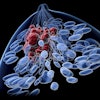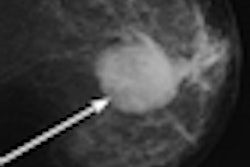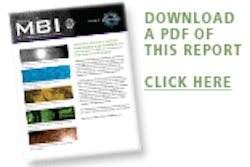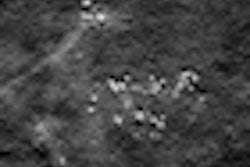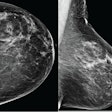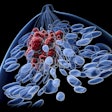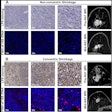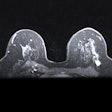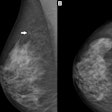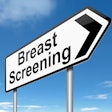Measuring breast tissue density by analyzing mammographic parenchymal patterns could help clinicians better determine a woman's breast cancer risk, according to a new study published online in Radiology. It could also lead to better patient care by enabling more accurate density measurements.
Researchers at the University of Michigan developed a computerized mammographic parenchymal pattern (MPP) measure and explored the association between texture patterns of fibroglandular breast tissue in the retroareaolar region with breast cancer risk (Radiology, March 15, 2011).
Currently, the most common approach to determining a woman's breast density is for a radiologist to visually assess the fibroglandular tissue imaged on the mammogram and assign a BI-RADS category to it, according to lead author Jun Wei, PhD, and colleagues. However, this approach is subjective.
"A more accurate and reproducible measure than [BI-RADS] for breast density that does not depend on the subjective impression of human readers may further improve the reliability of breast density estimates for risk prediction," the authors wrote.
Computerized quantitative measurements of breast density are still new on the clinical scene, but studies have shown that these techniques can improve reproducibility and intraobserver agreement of breast density measurements, they wrote.
For the current study, Wei and colleagues used computerized analysis of the distribution of breast tissue on mammograms, compared with mammographic density measurements (percentage density, or PD) in which density is measured as the percentage of dense area estimated from the segmented breast on mammograms.
The study population included women who had received mammographic screening at the University of Michigan Health System between 1993 and 2002. Wei's team collected mammograms from 382 women: contralateral mammograms, acquired at least a year before diagnosis, in 136 cancer patients, as well as a control cohort of mammograms from 246 healthy women who had cancer-free follow-up for at least five years.
The team used an automated method developed previously in its laboratory to estimate the percentage of fibroglandular tissue area relative to total breast area. Wei's group also designed a computerized mammographic parenchymal pattern algorithm to analyze texture patterns of fibroglandular tissue behind the nipple and areola.
To use the textural information in the breast parenchyma to improve risk prediction, the MPP descriptor needed to be able to characterize spatial relationships of breast structures while also having a low correlation with percentage density measures, Wei and colleagues wrote. The Pearson product-moment correlation coefficient between the MPP and the PD was 0.13, a low correlation, according to the authors, while the computerized MPP measure had a strong association (p < 0.001) with breast cancer risk.
"The computerized MPP measure may provide useful information, in addition to PD, for prediction of breast cancer risk of an individual; it may, therefore, serve as an additional biomarker for breast cancer risk surveillance and patient management," they concluded.



